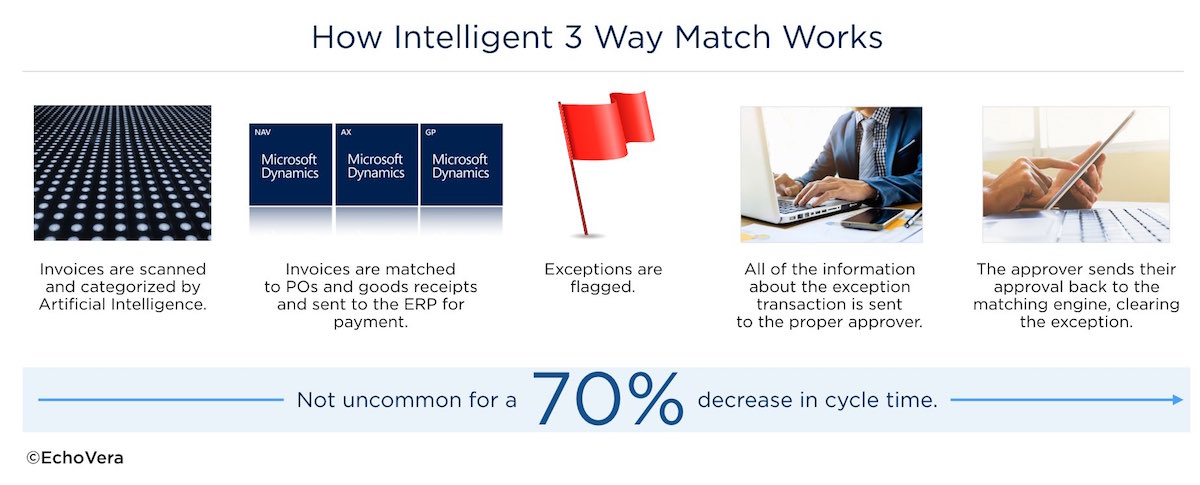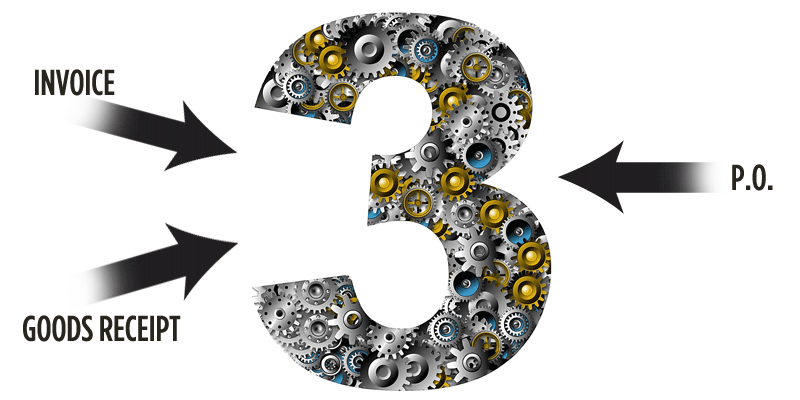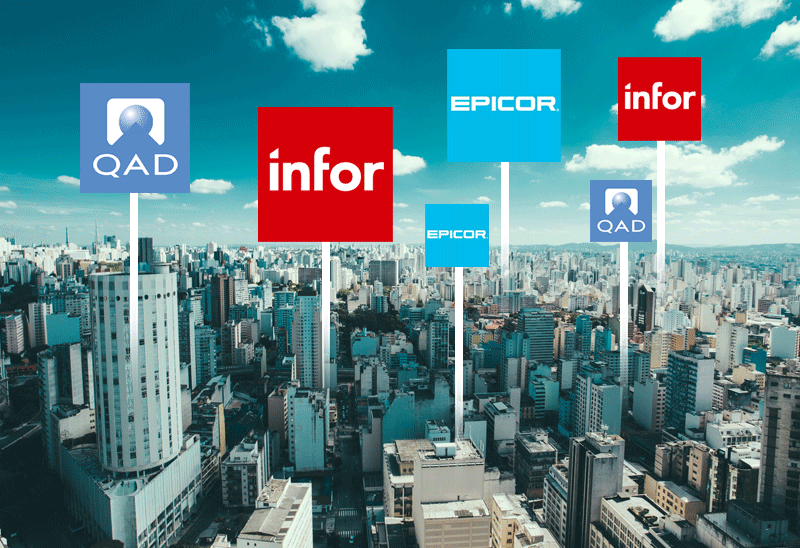Dynamics AX AP Workflow and AP Audit – What You Should Know
Dynamics AX AP Workflow and AP Audit – What You Should Know https://echovera.ca/wp-content/themes/corpus/images/empty/thumbnail.jpg 150 150 Tim Robertson https://secure.gravatar.com/avatar/6847ba38495b3996e0bdf3a15c015e0c?s=96&d=mm&r=g
In a previous post we talked about the 3 forces affecting Dynamics AX and the AP process today:
- Finance executives want more visibility into the overall accounts payable process.
- Companies want to reduce the cost of processing supplier invoices.
- Technology has made 3-way matching, intelligent data capture, auditing and real-time reporting of invoice status a reality.
We also talked about what functions to look for when exploring AP automation solutions, such as Intelligent OCR, Intelligent Capture, and Authentic 3 Way Matching. In this post, we talk about the functions – AP workflow, reporting, communications, and audit trail – that are incorporated into an AP automation platform for Dynamics AX.
AP Workflow Provides Visibility
Visibility into the AP process means being able to monitor the status of your invoice processing at any time. It’s about managing the workflow so that invoices don’t get stuck in the system, resulting in late payments or other complications.
An AP automation workflow automatically routes invoices for approval, coding, or payment.
Incoming invoices from Intelligent OCR (paper invoice capture) and Intelligent Data Capture (email invoice capture) show up in a dashboard where the status of each invoice is displayed. For invoices that match your configuration settings, approvals are fully automated, from header or line order matching, and account posting, through to automatic routing for authorization and automatic sign-off.
- Invoices that fall outside predefined thresholds are classified as “exceptions” and automatically routed for reconciliation. Based upon the rules as defined by your business users, the correct account postings would be added to the invoice, and it would then automatically be transferred to the correct approval workflow.
- Managers approve expenditures on laptops or mobile devices, and once authorized, the invoices are coded by the appropriate person and sent to Dynamics AX.
- Workflow steps are easily added, based upon your specified authorization levels, if additional approvals are needed. In total, manual intervention is kept to a minimum – with “one-click” invoice approval.
Reporting
Reports allow you to drill down to the detail level, and export data to Excel. The reporting system tracks data and the trends that affect all of your AP processes, e.g. bottleneck reports, invoice flow status, supplier balance, GRNI, etc.
Communications
You can execute internal and external communications using email, FYI routing and chat in the workflow dashboard, which greatly reduces processing time when handling exceptions.
- Users are automatically notified via email when there are invoices that need their attention. Reminders and escalations are set based upon your business rules.
- Accuracy of account coding is ensured through the use of permissions which would ensure that users are only working on those documents for which they are authorized.
- Each step the invoice takes in the process is logged and monitored in a comprehensive audit trail.
Audit Trail
The audit trail is an electronic trail that gives a step-by-step documented history of invoice transactions.
- The presence of a reliable and easy to follow audit trail is an indicator of good internal controls instituted by an organization, and forms the basis of objectivity for enquiries or investigations.
- The audit trail not only records and displays communications between internal staff and suppliers, but also includes time stamps and the approval process for each invoice.
Putting It All Together: ASAP
Our solution, EchoVera ASAP for Dynamics AX delivers a comprehensive solution that includes Intelligent OCR, Intelligent Data Capture, 3-Way Matching, Contracts, an AP workflow for online coding, validation, and approval; extensive reporting with drill down functionality; online tracking, an audit trail and a searchable archive.
For more information on EchoVera ASAP for Dynamics AX, click here.






 Three Way Match Defined
Three Way Match Defined

 Manually capturing essential data fields from emailed or paper invoices is time consuming and resource intensive. Some AP departments handle mailed invoices in various ways, with most of them keying in the invoice data manually, a time consuming and error-prone process. Emailed invoices are often handled the same way, printed them out and then keyed into Dymamics – not the most efficient way to input data.
Manually capturing essential data fields from emailed or paper invoices is time consuming and resource intensive. Some AP departments handle mailed invoices in various ways, with most of them keying in the invoice data manually, a time consuming and error-prone process. Emailed invoices are often handled the same way, printed them out and then keyed into Dymamics – not the most efficient way to input data.



 Defining 3 Way Matching
Defining 3 Way Matching 

